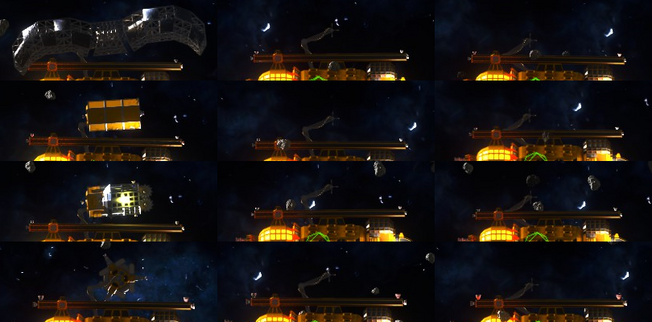
Description
Cradles are the ship-side connection for any small craft types of equipment. Currently, there are five different pieces of equipment that use cradles: Impact Absorbers, B8 Claim Beacons, THI Cargo Containers, THI Mono Cargo Containers, and NT Mining Companions. Each of these equipment pieces can be released from the ship by disabling the cradle's slot, either through the hotkey appropriate to the hardpoint, or through the mechanic tab in OMS (accessible by 'J' by default), where the empty cradle can be re-enabled to recapture the craft, or to capture a different craft.
Usage
Basic usage of the cradle is to hold, capture, and release small autonomous vehicles. As stated before, they are toggled via hotkey or OMS, and will attempt to grab the nearest small craft while enabled without anything connected to it. A secondary function that isn't initially stated with cradles is that any free cradle with power will also attempt to capture lifepods.
Specific craft will have different behaviour depending on the type whilst connected:
- Processed cargo will be transferred between THICCs and the internal processed cargo hold depending on fill level and geologist settings
- B8 Claim Beacons, THICCs and NT Companions will have their remass tanks refueled to max tuned.
- Lifepods will interface with the ship
- A rogue THICC or rogue NT Companion will be reprogrammed to accept your commands, allowing you to release it and send it to Enceladus to your benefit
Limitations
Cradled equipment can get very heavy. The cradle's own mass of 500kg is negligible on it's own, but other equipment can easily swamp the ship's mass. THICCs alone are the biggest offender to this problem, as they can gain up to 90 tonnes above their dry mass. The dry and potential masses are displayed in this table (cradle weight not accounted for):
| Equipment Name | Dry Mass | Wet Mass (minimum) | Wet Mass (Maximum) |
|---|---|---|---|
| External Impact Absorber | 8,000 kg | N/A | N/A |
| B8 Claim Beacon | 8,000 kg | 16,000 (non-tunable) | 16,000 (non-tunable) |
| THI Cargo Container | 8,000 kg | 9,000 kg up to 99,000 kg w/full mineral hold (15 tonnes/mineral) at 1,000 kg propellant reserve | 18,000 kg up to 108,000 kg w/full mineral hold (15 tonnes/mineral) at 10,000 kg propellant reserve |
| THI Mono Cargo Container | 8,000 kg | 9,000 kg up to 99,000 kg w/full mineral hold (90 tonnes single mineral) at 1,000 kg propellant reserve | 18,000 kg up to 108,000 kg w/full mineral hold (90 tonnes single mineral) at 10,000 kg propellant reserve |
| NT Mining Companion | 12,500 kg | 13,500 kg (not including captured ore) | 22,500 kg (not including captured ore) |
The masses of attached vehicles are not centred, so if a ship does not have anything equipped mirrored on the other side, there can be rotational sway depending on how much mass is contained. Disabling a hardpoint when certain equipments are no longer needed may be a good counter to this, and may also free up the cradle for other oddities. The effects of mass imbalance can also be reduced through use of certain autopilots or manual controls